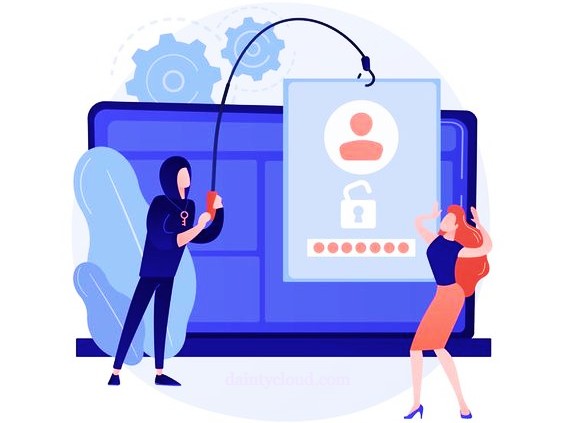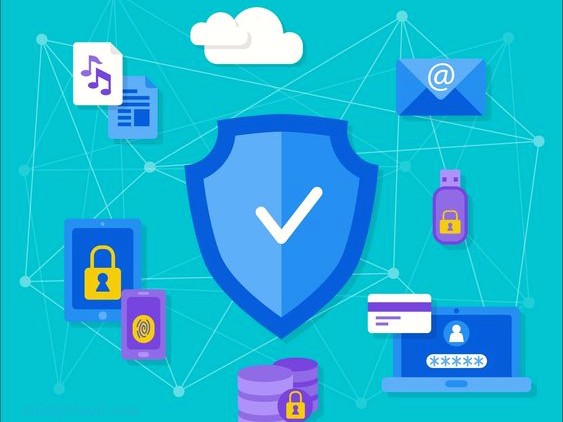Protect VPS against Brute Force attacks
According to Verizon data, more than 80% of data breaches involve Brute Force attacks. For VPS users, this is no exception. Therefore, it is essential to implement protective measures. Explore this topic with Dainty Cloud in the article below.
What is Brute Force Attack?
A Brute Force attack is an attempt to hack a password or username. Or is it a form of password testing true or false? Brute Force works by detecting usernames and passwords. It keeps doing it over and over until it finds the correct information. From there, you can access your account, encryption key, or hidden websites on the internet. This type of attack technique works for all encryptions. It is an old attack method, but it is still effective and popular with hackers. Depending on the length of the password for hackers to accomplish their goals. If there is no time limit, getting the password is only sooner or later for hackers.

After obtaining the password, hackers can edit the website, adversely affecting the business. They also spread malware, gain illicit profits, and advertise and activity data. Or worse, steal users’ financial, sensitive or personal data. Brute Force attack does not require overly complicated techniques. Therefore, attackers often automate their attacks by running multiple machines in parallel. It helps them expand the scope and speed of their search.
Common Brute Force Attack Types
Brute Force attacks have three common forms below:
Dictionary Attack: Dictionary Attack is the simplest type of attack. Hackers will go through every possible password in a dictionary to perform the cracking. The most common passwords will be used by hackers one after another. Dictionary Attack is generally a relatively outdated technique.
Credential Recycling: Another common type of Brute Force attack is Credential Recycling. Reuse the username and password combination from the data of other security holes to break into the system.
Reverse Brute Force Attack: The third type of Brute Force attack is the Reverse Brute Force Attack. The third type of Brute Force attack is the Reverse Brute Force Attack. Hackers will base on a most basic password is “password” and then find all users using this password in turn. “password” is the most popular password in recent years. Therefore, this type of attack is very effective.

The Cause and Effect of Brute Force Attacks
The Cause
Being subjective in setting passwords and usernames makes Brute Force attacks more likely. Here are some of the causes of Brute Force attacks:
- The user sets the username as admin, administrator, or common words and phrases.
- Set an insecure password. Easy-to-guess passwords or passwords are commonly used words.
- Do not implement login path security.
- Do not make frequent password changes.
The Effect
When you become a victim of Brute Force attacks, you will suffer the following severe consequences:
- Reveal login information and lose website admin rights.
- Leaking Important or Sensitive Data.
- Attackers take advantage of the system to perform malicious purposes.
- The attacker inserts malicious code that affects the general operation.
- The attacker changes the website interface, adversely affecting the brand’s reputation.
- Resources on your Server/Hosting are lost, similar to a DDoS attack.
- The server may crash if the server is weak and attacked with high frequency.

How to prevent Brute Force attack
Brute Force attacks will take a certain amount of time to work. Finding beneficial results can take a long time. Therefore, the most basic way to prevent is to “buy time” for these attacks. However, this is not so technically practical. The most basic and effective ways to protect VPS against Brute Force attacks are:
Increase password length. The more characters a password has, the longer it takes Brute Force to crack.
Increase password complexity. You can insert more characters than letters and numbers. It helps prolong the search time of the attack.
Captcha. Captcha is the most popular confirmation system today. Many websites have implemented this option. And have shown the ability to prevent Brute Force attacks very effectively.
Multi-factor authentication. Adding multiple authentication factors adds a second layer of security, requiring precise human access to log in.

Besides, active defense is to deploy VPS and server monitoring systems. In addition, active defense is to deploy VPS and server management systems. Better yet, you should still actively disable them when it still hasn’t cracked your password. Also, put the suspicious IP addresses on a list to prevent further attacks.
Security for VPS is the same as security for computers. If security is good, the use process will bring higher efficiency. Do not hesitate to learn and apply good tips for your VPS. Dainty Cloud is always ready to answer all of your questions. Visit our website to enjoy the best advice and selection.














